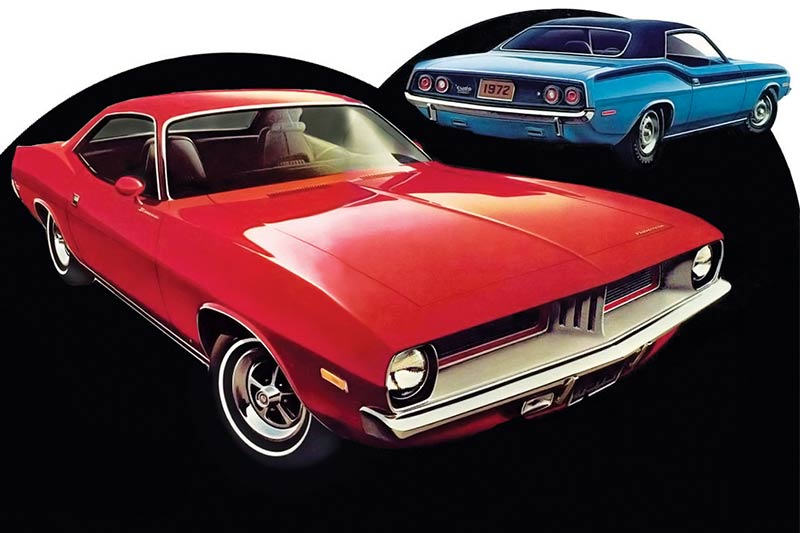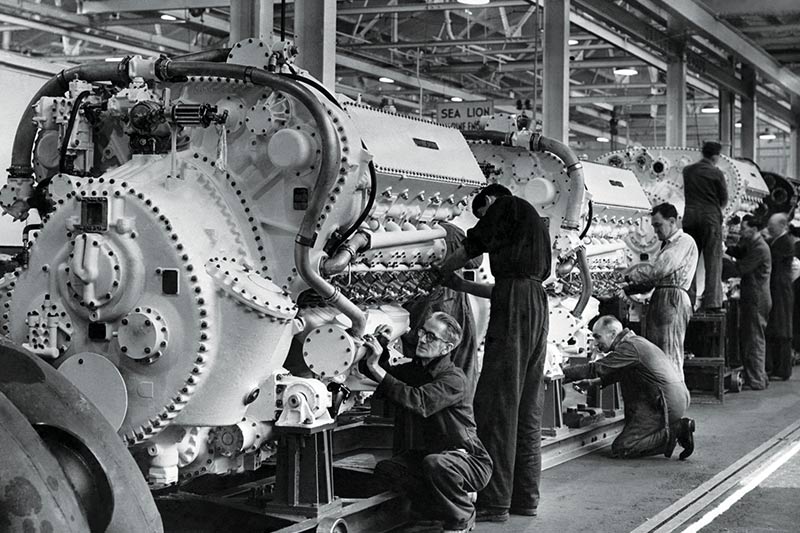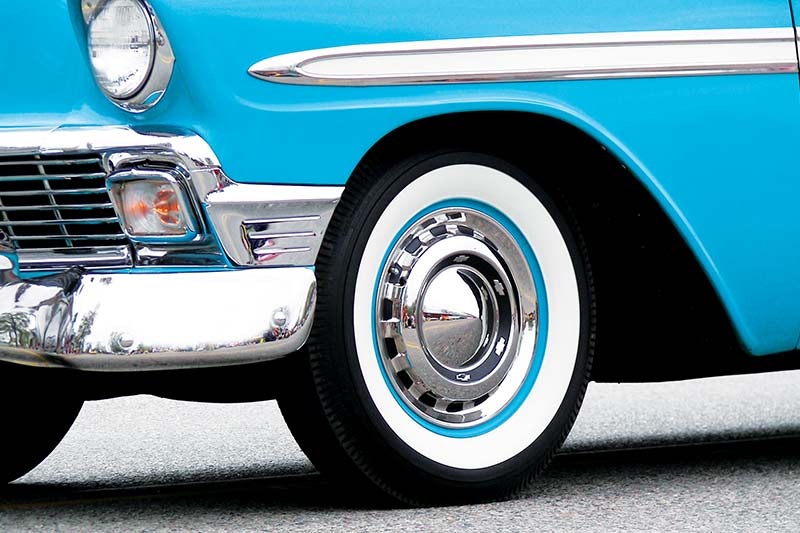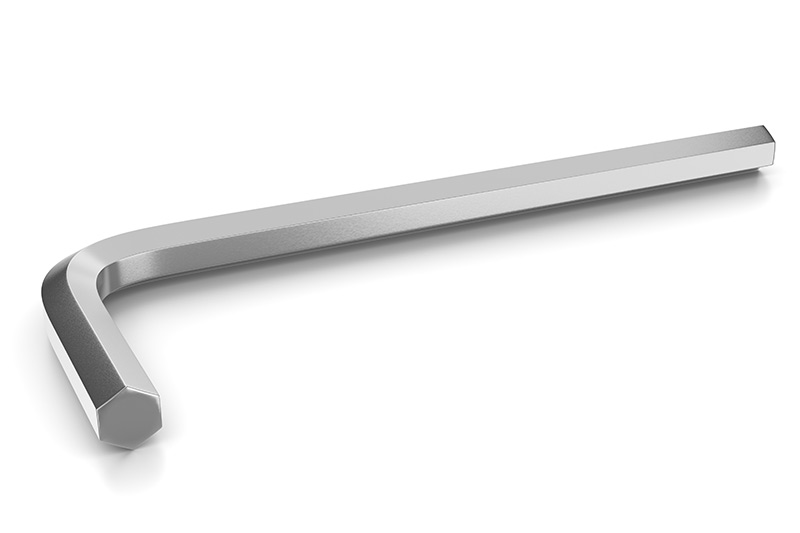VG Valiant Pacer + Hot v Stock Engines + More - Morley 398



|
Morley goes elbow-deep into the mire of VG Valiant castor. The debate on two-stroke diesels rumbles on and Morley ends up wondering if respect does always get respect
LETTERS
CROOKED LEFTIE
I have purchased a VG Pacer and have redone the suspension, But I’m having problems with the castor on the left-hand side. Any ideas?
Mathew Tickle,
New Zealand
Geez, Mathew, you haven’t given me a lot to go on here. It sounds like a bit of a weird one, to be honest, and it had my Chrysler-torsion-bar-suspension expert scratching his melon, I can tell you. Unlike a lot of cars that use shim-packs to adjust the front end geometry, the castor on a VG Valiant is adjusted via eccentrics that act on the upper suspension arm. Which is to say, it’s not usually a problem to adjust the castor as it simply involves turning a spanner a quarter of a turn or so.
Now, if that doesn’t produce the desired result, my suspicions are that you’re looking at a bent chassis rail, a bent upper arm or maybe even a bent stub axle. The advice at that point – depending on how fussy you want to be – is to get the left-hand castor as close as possible to your desired setting and then adjust the right-hand side to match. A bit dodgy, but it will get you out of trouble if the distortion isn’t too bad. Me? I’d find out what’s bent and fix/replace it.
But here’s the curve-ball: My expert tells me that while many double A-arm cars of this era run positive castor, the VG Val actually runs between three-quarters and one degree of negative castor. That’s in the case of a non-power-assisted-steering car, purely because any positive castor makes them too heavy to steer. On cars with power-steer, the conventional wisdom seems to be to set the front end up with between three-quarters and one degree of positive castor.
The point being that if your wheel alignment dude isn’t up to speed on old Valiants, he or she might be wondering why the heck they can’t get enough positive castor on to the thing when, in fact, they don’t want positive castor at all. A bit of a long shot, but worth hecking.
GLASS-HALF-FULL SOCIETY

Good on you Morley for keeping the red motor debate going. Just read old mate Greg Hodgins’ letter and had to laugh. Some blokes take stuff way too seriously. I’m a Chrysler bloke but I get a kick out of reading all the various letters about the rumours of weird stuff happening. I’m in the "anything can happen" camp personally. Car companies did a lot of unofficial stuff back then that is either very hard or impossible to document now.
I mean, look at Chrysler in the States in 1972. No more Hemis or 440 big blocks were supposed to be fitted to cars by then. Production had ended in 71. But did they make it into passenger cars in 72? Well as far as I know a few of each snuck through, very unofficially and way under the radar. I have no concrete evidence personally, but have read about it in several dedicated Mopar books and mags from the States so I don’t see why it couldn’t happen with the red motor. I agree with you, just because you haven’t got rock solid proof yet doesn’t mean it didn’t happen. The nay-sayers are obviously of the glass-half-empty type rather than the positive thinkers like you, myself and the rest of the UC readers who enjoy other readers’ memories of GMH stuff from the 60s and 70s.
Also, in regards to the question about when is a car a classic: Although I’m not really into plastic bumper cars that much, there are some great ones out there that would qualify as classics. I’m thinking Group B rally cars, 80s and 90s Japanese stuff; that kind of thing. I wouldn›t say an XR8 Sprint is a classic yet. Or a Dodge Challenger Hellcat, as they are still new(ish) cars. Maybe someday they will be classics.
I think some of the things that define a classic car are: Age – at least of 15 or 20 years; accomplishments in some sort of motor racing; style; simple (mostly) engineering that the average bloke can work on and fix. But mainly it’s to do with something feeling a bit special, something that stands out from the crowd of black, white and silver SUVs. It doesn’t need to have all these qualities, but if you can pull up at a servo and the bloke a few cars across comes over for a yarn about it, and how he or someone he knew had one like yours, then that ticks the box for me. Let’s face it, he’s not going to come over to talk about your 2014 RAV 4 is he?
Logan Leatham,
Langwarrin.
Needless to say we think alike on this subject Logan. If the various factories had documented all the weird and wonderful combinations of cars that shouldn’t have existed, we’d have a lot less to talk about over a beer, wouldn’t we?
And I’m with you all the way on what makes a classic car. I reckon you’ve hit the nail on the head by suggesting that, above all else, it’s whether a car makes you feel a bit special when you’re driving it or even staring at it in the driveway. It’s why a HK Monaro will always be just that little bit "more classic" than the equivalent Kingswood. Sure, they’re both extremely collectible cars now and, providing the Kingswood example is in good nick, worth many times their original asking price. But even if they’re both running identical 186 engines and three-speed manuals, the Munroe will always be a sexier looking thing. And that will count both now and into the future.
Throw in the fact that Holden made a lot fewer Monaros than sedans and that the Monaro won Bathurst (in GTS 327 form, not with a 186) and their respective fates are sealed. But don’t get me wrong, a HK Kingswood in the right colour, with the right wheels and the right stance will always do it for me. And thank goodness for that, because the prices of Monaros are now in La La Land for most of us, meaning that a tidy HK Kingy or Belmont is probably the realistic way to go.
BITSA vs THOROUGHBRED

Regarding Craig Polkinghorne’s letter about some hotted up engines being slower than stock ones: I have seen this many times over the years. But Pinto engines are a trap for young players, especially in setting up the valve gear. If the valve stem height above the spring seat is not correct (either shorter or longer) the underslung rocker arms end up at the wrong angle and in the end provide less lift to the valve, reducing horsepower.
Meantime, more dodgy fixes. Don’t know if you have heard these before…
When I was an apprentice mechanic in the late 60s my mate worked for a dodgy car-yard. He did among other things, fit leather belt cut to size as a big end bearing in an old 40s Morris. McGyver before his time. It ran nice and quiet for a while but the knock came back eventually. The salesman convinced the owner that he hadn’t checked the oil regular enough and it had run out of oil.
In other engine ‘overhauls’ Tally Ho papers were placed between the big end shell and the con-rod cap to reduce the bearing clearance. If they were really worn they used shim brass. I have seen people use car bog to fill worn hub-seal grooves on trucks axles so the seal won’t leak. No Speedi Sleeve in them days!
Neil Englund,
Haven’t heard that abut Pinto motors before, Neil, but it makes sense if you make a mental picture of how the underslung rocker works. I reckon the other factor in a `tuned’ engine making less power than a stocker is that folks don’t match their components correctly. We all had a mate back in the day who put a big cam in his 186 with no other changes, only to have it lose 10mph off its top speed, right? This is why good engine builders are worth their weight in Tim Tams; they know what works with what and won’t take 12 months trying to arrive at a winning formula.
As for your mate’s dodgy fixes, I’ve heard of using a bit of old leather belt as a supplementary bearing material before, but usually only as a get-you-home fix, not something that was then foisted upon an unsuspecting member of the public in return for cash. Some people have no morals. Haven’t heard of ciggie papers being used to take up bearing clearance either. To be honest, a piece of thin paper wouldn’t have been my first choice.
But I have heard of shim brass being used in a similar way before today. A mate of mine had an old Lanchester (a Daimler with even less power) way, way back in the day. Typically, it used a king-pin front end which was always loose.
My buddy got used to it and could drive around the wobbles (not such a problem with a top speed of 58mph. Downhill) but come rego time each year, the Lanchester needed shimming up to get through the roadworthy inspection. Shim brass was the favoured material, but even then, Matey reckons he had to pull up a block from the inspection station, re-shim the front end in the gutter and then present the car. And by the time he got back home with his fresh new pink-slip, those king-pins would be clacking and slacking again, just as bad as ever.
THE ULTIMATE STROKER

Hi Morley, just reading your "Different Strokes" article in Issue #396. I thought I’d share what would have to be the ultimate two-stroke – the Napier Deltic 18 cylinder, 36 piston two-stroke diesel engine used by the Poms in their WW2 motor torpedo boats and later in their locomotives. Mr Victa would have trouble matching this one….
I can relate to your love of the ruggedness of the two-stroke. I had a Victa mower I bought second-hand at an auction in the early 70s. It was probably 10-plus years old then. I retired it less than 10 years ago, it still ran but was getting cantankerous, possibly something to do with the crankshaft moving in two directions, but after close to 40 years of service I couldn’t complain.
Laurie Floyd,
Wow, I never dreamed the mention of two-stroke engines would create such a groundswell of emotion from you lot. Okay, so I made a tech blunder when I first mentioned two-stroke diesels (I assumed the crankcase was pressurised. It’s not.) and a couple of you picked me up on that, but more of you again have made contact to express a deep appreciation of what the two-stroke engine has to offer.
And geez, Laurie, four decades with the same lawn mower! Most marriages don’t last that long. Meantime, the Napier Deltic you’re talking about was/is indeed a monumental piece of work. You’ve got to hand it to the bloke who came up with the idea of using opposed pistons at either end of the cylinder, trying to headbutt each other and, in the process, forming the combustion chamber, even if it meant having three crankshafts; one on each corner of the delta.
I think – and I’m happy to be corrected here – that the venerable Commer Knocker (another Pommy contraption) used similar technology, although it had a single crankshaft with the second piston operated by a con-rod and a rocker lever. From what I can gather (it was before my time) the Knocker performed well but the big problem was that the shaft, which ran all the way from the back of the engine to the front to drive the scavenging blower, could be a bit brittle. And without the supercharger to scavenge the cylinders, she no go.
Apparently, the move to the compact opposed-piston layout was aimed at keeping the engine physically low so it could be mounted under the cabin floor as one of the early `cab-over’ designs. Anybody out there with experience of a Commer Knocker? Let’s all share.
Actually, I’ve just had a better idea: Anybody out there actually own a running Commer Knocker or anything else with an opposed-piston diesel two-stroke? I’d love to come and have a look at it and maybe start a little video series on Weirdness We Love. I’d watch that. What do you lot reckon? Does a little UC video series on weird engineering grab you? And what subjects should it tackle?
JUST TO RECAP

Ahh, Morley, you never disappoint: I can certainly relate to the valve cap saga. I always worried about losing the caps when checking tyres, so I grip the cap firmly between my lips to keep my hands free to activate the servo’s air pump. You should never try talking to someone while doing this, because they will get the impression that you are gritting your teeth because you are a bit pissed off with being interrupted. There is always the chance you could swallow the cap as well. Also, unfortunately, sometimes there is a mysterious nasty "taste" from the cap and you make a mental note to keep your neighbour’s dog away from your wheels.
I have in my possession a special valve cap, which doubles as a "valve key", very handy if a slight leak is due to a loose valve. However, I keep it in the glove box, and never have it screwed onto one of my tyres, because the thieving little buggers in my suburb have already stolen a nice chrome set of caps I had, the type you recommend in preference to the plastic ones. If I see the offender’s BMX bike with chrome valve caps I’ll let his tyres down with my trusty valve key!
Geoff Scard,
I know the valve caps with the valve key built into it that you’re talking about Geoff. I had one myself somewhere some years ago, and I agree, they’re a very handy thing to have and the first port of call for a slow leak which can sometimes be a loose valve.
But maybe your suburb isn’t so bad after all: About three years ago, a few mates and I rode motorbikes (Suzuki DR650 in my case) across Central Asia including Mongolia and Kazakhstan (Have you seen the Borat film? Turns out it was a documentary.) Anyway, we’d stayed a few nights in the clubhouse of an Istanbul bike gang and they thoughtfully placed a tiny little Turkish-flag sticker on my bike. Which was fine till I got to the farthest eastern bit of Turkey which is part of the disputed turf where Turkish forces and Kurdish insurgents have been trading lead since 1978.
Parked in the street overnight, some Kurdish kid obviously didn’t like my Turkish flag waving and decided I needed a flat front tyre on my bike. But did he loosen the valve? Nope, he stuck a knife right through the sidewall. So now I don’t have any flags or national identification on my bikes or cars. Beyond that, it was a magic trip and one I’d love to repeat. Maybe in a VW Beetle on mud tyres…I haven’t decided yet. Actually, there’s some homework for the lot of you: What classic car would you use to tackle the same 22,000km trek, taking in lots of deserts, some pretty rough tracks and the odd river crossing? I’d love to hear your choices and why.
HERE'S MY TIP
KEY MAN
 The Allen-head or hex-head fastener is a pretty common one these days. And a great way to deal with them is with a set of T-handles. Conventional, short Allen keys are okay, but T-handles give you a lot more speed and convenience. You can buy very simple T-handles for not much money, but I reckon it’s worth spending a bit extra and getting a set with a couple of additions. The first is a second Allen key set into the side of the handle. That gives you the option of getting into a tighter space as well as using the long shaft of the handle for leverage for that final nip up. The other feature to look for is a T-handle with the rounded end on the hex, enabling you to attack the fastener from a relatively oblique.
The Allen-head or hex-head fastener is a pretty common one these days. And a great way to deal with them is with a set of T-handles. Conventional, short Allen keys are okay, but T-handles give you a lot more speed and convenience. You can buy very simple T-handles for not much money, but I reckon it’s worth spending a bit extra and getting a set with a couple of additions. The first is a second Allen key set into the side of the handle. That gives you the option of getting into a tighter space as well as using the long shaft of the handle for leverage for that final nip up. The other feature to look for is a T-handle with the rounded end on the hex, enabling you to attack the fastener from a relatively oblique.
TRIVIAL PURSUIT
BOOT SCOOTIN’

Creative interpretation of the rules is a time-honoured process in motor racing. And pretty much nobody was better at it than the late Harry Firth. Harry designed the Cortina GT in the 60s to win at Bathurst, but the rules in those days stipulated that the car must run as it was delivered off the showroom floor. So Harry dictated that dealers delivered the GT500 with the air-cleaner in the boot, allowing the car to run with an open carb at Bathurst. Where, in 1965, it won the Great Race with Bo Seton (Glenn’s dad) and Midge Bosworth at the wheel.
TWIN PIPES

Another of Harry Firth’s strokes of genius with the Cortina GT500 was to use twin filler necks. The rules of racing back then mandated a fuel churn with a regulation-sized spout, effectively limiting the speed at which the car could be filled. But nobody said you couldn’t use two churns at once, halving the refuelling time. Simple when you think about it, but up to that point in Australia, nobody but Harry had. No wonder they called him the silver fox.
Write to Morley c/o uniquecars@primecreative.com.au
or Unique Cars magazine, 379 Docklands Drive, Docklands, Victoria 3008
Unique Cars magazine Value Guides
Sell your car for free right here
Get your monthly fix of news, reviews and stories on the greatest cars and minds in the automotive world.
Subscribe

.jpg)








.jpg)

